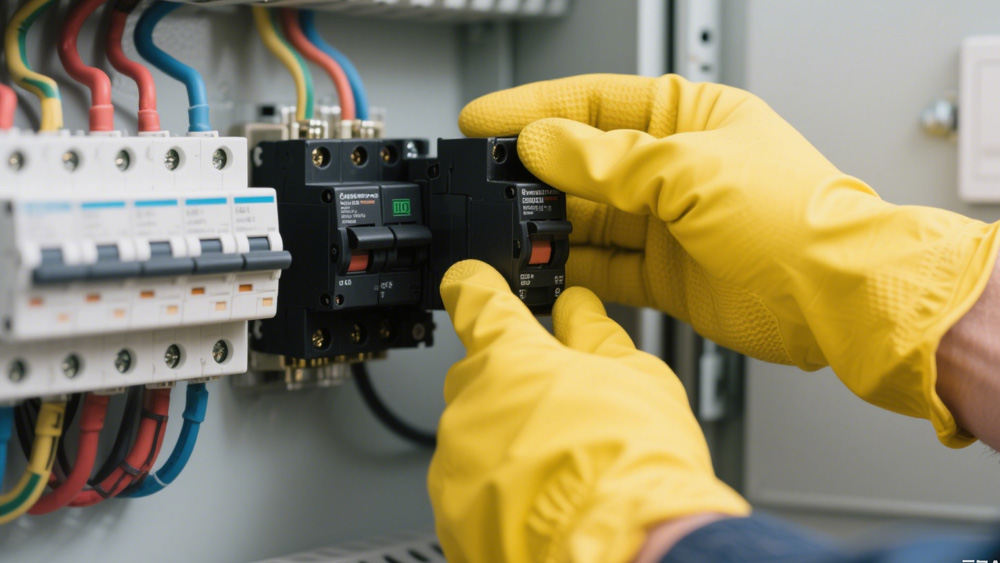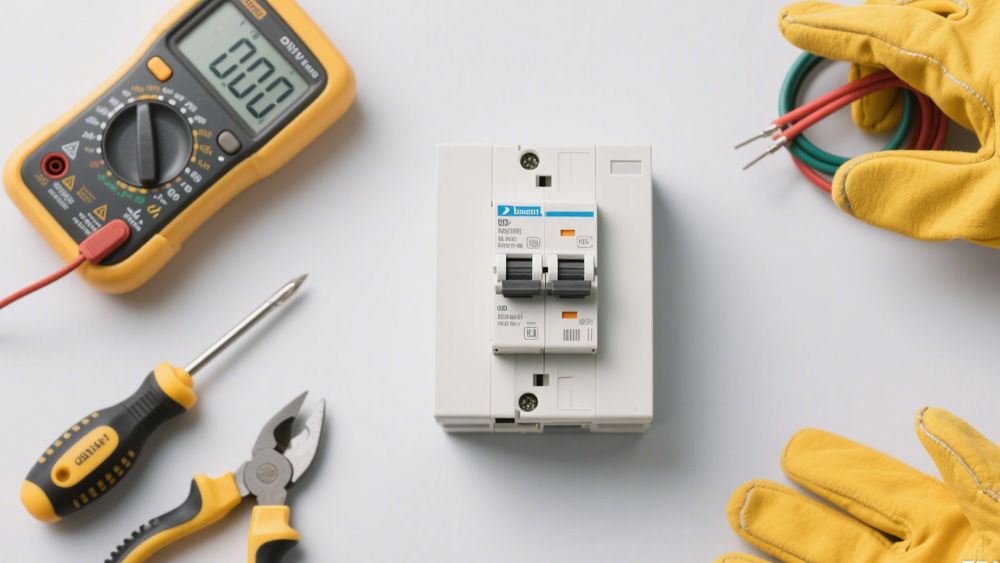Get quick appointment for technical support!
How to Replace a Breaker Safely and Effectively
Aug 22,2025
A failed circuit breaker may leave your house without power, even when the grid is operating normally. This small device helps protect your electrical system, and when it fails, knowing how to replace a breaker can restore both power and safety.
While replacement may seem complex, with the right knowledge and tools it becomes manageable. In the following sections, we’ll look at when replacement is necessary, what costs to expect, step-by-step instructions, and common issues that may arise.
Why Replace a Circuit Breaker?
Circuit breakers are designed to protect your home by shutting off power when circuits are overloaded or shorted. Over time, they can wear out, become damaged, or fail to operate properly. Learning how to replace breakers helps keep your electrical system running safely. A breaker may need replacement if it trips frequently under normal load, shows signs of damage such as corrosion or burning, can not be restored, or loose wiring.
Upgrades to panels or the addition of new appliances may also require installing new breakers. In particular, knowing how to replace the main circuit breaker switch is important because the main breaker controls power to the entire panel and protects every circuit in your home.
When to Replace a Circuit Breaker
Signs of a Bad Circuit Breaker
Frequent tripping even after reducing the electrical load, breakers that can not be restored, or visible damage such as scorch marks, cracked housing, or loose wiring are common warning signs. A breaker that feels hot to the touch or produces a burning smell should also be replaced.
Age and Wear
Most circuit breakers last about 25–30 years. If your electrical panel is older and begins to struggle with modern appliances, replacement may be necessary. In some situations, adding high-amperage equipment can also require upgrading from a 15-amp to a 20-amp breaker if the wiring supports it.
Main Breaker Concerns
For main breakers, replacement should be considered if the switch is damaged, unstable, or no longer holds in the “on” position.
When to Call a Professional
If the panel feels hot, shows moisture, or you notice sparks or burning odors, stop immediately and call a licensed electrician. Attempting to handle a main breaker or panel upgrades without professional training can be dangerous and may require permits under local codes.
How to Replace a Circuit Breaker
If replacement is necessary, follow these steps carefully. Many homeowners search how to change a main circuit breaker or how to install a main circuit breaker, but remember that safety is the top priority. When in doubt, always call a licensed electrician.
Step 1: Turn Off the Main Breaker
Shut off the main breaker to cut all power to the panel and create a safe work environment.
Step 2: Remove the Panel Cover
Use the right tools to remove the cover, keeping screws and parts organized for reassembly.
Step 3: Identify the Faulty Breaker
Look for signs such as burn marks, corrosion, or a breaker that can not be restored.
Step 4: Disconnect the Wiring
Loosen and remove the wire connected to the faulty breaker with an insulated screwdriver.
Step 5: Remove the Old Breaker
Release the breaker from its mounting position by carefully prying it away from the bus bar.
Step 6: Install the New Breaker
Align the replacement breaker with the slot, snap it firmly into place, and reattach the circuit wire securely.
Step 7: Replace the Panel Cover
Reinstall the cover and fasten it with screws.
Step 8: Restore Power and Test
Turn the main breaker back on and test the new breaker. If it trips immediately, turn off power and inspect the wiring before another attempt.
Next, disconnect the wire connected to the faulty breaker using an insulated screwdriver. Carefully release the breaker from its mounting position by prying it away from the bus bar. Once the old breaker is removed, align the new breaker with the slot and firmly snap it into place on the bus bar. Reattach the circuit wire securely to the new breaker, making sure the connection is tight.
After reinstalling the breaker, replace the panel cover and secure it with screws. Finally, switch the main breaker back on to restore power, and test the new breaker by turning it on and checking if the connected circuit powers up correctly. If the breaker trips immediately, turn the power off again and inspect the wiring before attempting another reset.
Understanding Circuit Breaker Replacement Costs
Before looking at specific cost ranges, it’s important to understand that prices vary depending on breaker type, panel condition, and whether you hire a professional or attempt a DIY approach. The table below highlights common scenarios and their associated costs.
| Type of Replacement | Typical Cost Range | Notes |
| Standard breaker replacement | $100 – $200 (parts + labor) | Cost varies by amperage and whether work is DIY or professional. |
| Main breaker replacement | $200 – $600 | Higher due to amperage and complexity. |
| Full panel upgrade | $1,000+ | Required if the entire panel is outdated. |
DIY work may lower expenses, but professional installation is strongly advised, especially for main breaker replacement, since the complexity and safety risks are significantly higher.
Troubleshooting Common Issues
Breaker Keeps Tripping: After replacement, a breaker that continues to trip even after reducing the load may indicate faulty wiring or an overloaded circuit.
Main Breaker Won’t Restored: A main breaker that cannot be restored often points to a more serious fault within the electrical panel that requires professional attention.
Loose Connections: Loose or poorly tightened wires can create overheating and hazards, so it is essential to confirm every connection is secure.
Ongoing Power Interruptions: If outages persist despite replacing the breaker, it suggests that the issue lies beyond the breaker itself. In such cases, consulting a licensed electrician is the safest approach.
Conclusion
Learning how to replace a breaker can give you more confidence in handling your house’s electrical system. While the process is manageable with the right knowledge, electrical work carries risks, so calling a professional is always the safest option. Done correctly, breaker replacement helps keep your home safe and your power supply reliable.
--- END ---


